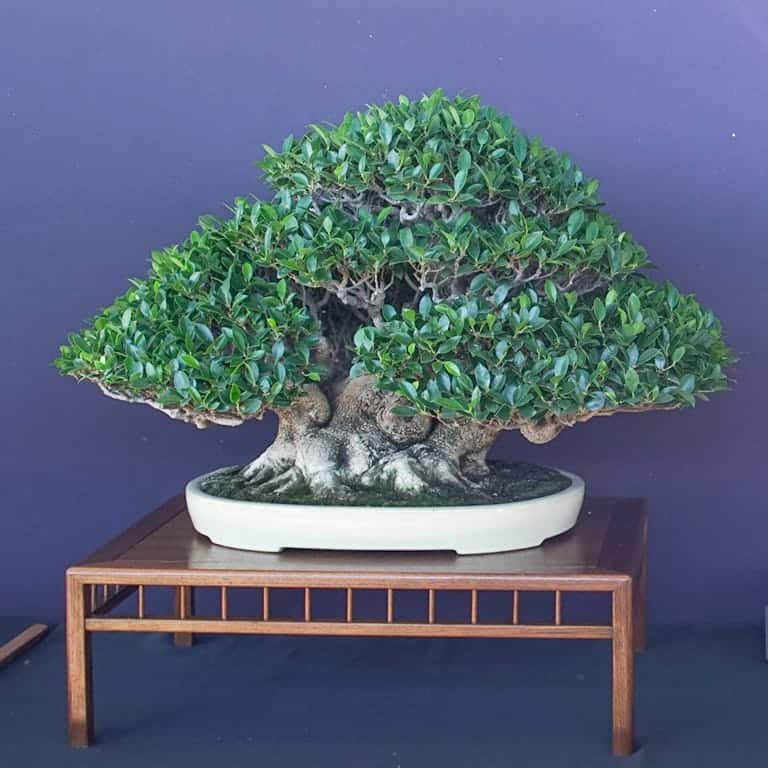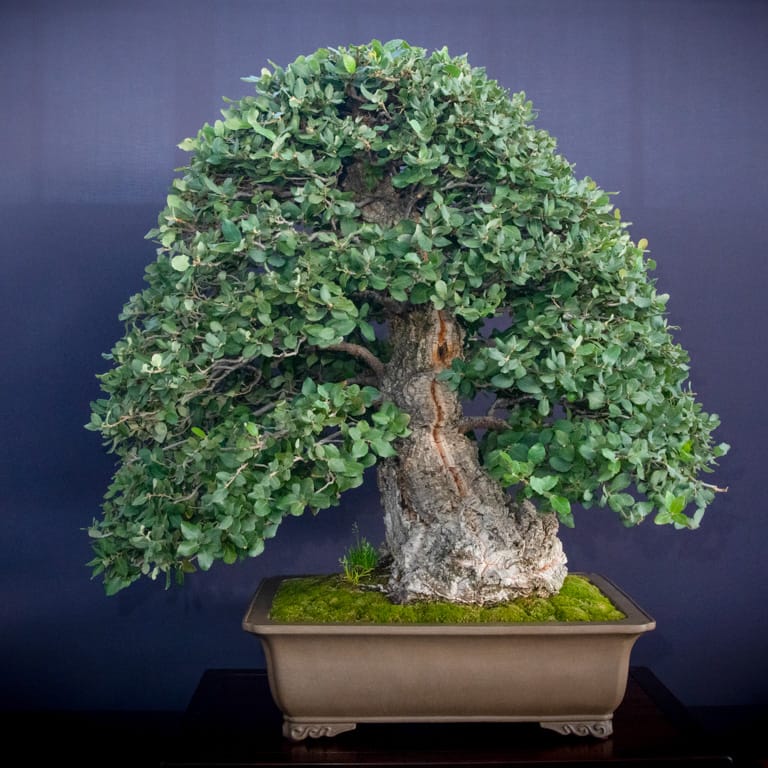Let’s assume about at two of the extra spectacular broadleaf evergreens within the Expo, a ficus and a cork oak.

Chinese Banyan Tiger Bark Ficus by Jeff Stern
Image courtesy Julian Tsai

Cork Oak by Michael Roberts
Image courtesy Vince Smith
Both trees scored successfully within the judging – here are the facts:
Tiger bark ficus: overall rank: 17 of 73; total facets: 154; moderate fetch: 3.85
Cork oak: overall rank: 25 of 73; total facets: 149; moderate fetch: 3.725
With forty judges awarding between one and 5 facets every, most practical seemingly 5 facets separated the two trees – a terminate name!
I allege both trees deserve a fetch of 4, give or score some extent, as they’re both above moderate brooding concerning the opposite bonsai within the portray. The ficus has ample division pattern and surface roots whereas the cork oak has gigantic presence and conveys age with its fissured bark.
What could per chance well additionally bump one tree over the opposite? The judges idea to be the containers, stands, accents, and overall shows. In the case of the trees themselves, tree age, preparation, pattern, surface roots, branches, and silhouette got here into play.
More difficult to clarify characteristics would be things like how successfully a tree exemplifies its species. As an illustration, is the ficus a greater ficus than the cork oak is a cork oak? Set up one more manner, what are our expectations for ficus bonsai (amazing division division density, sinuous feeling) versus our expectations for cork oaks (gigantic bark on the trunk and main branches) and the map does every tree fetch amongst other examples of the species.
Beyond that we’re stepping into private biases for trees or kinds we simply like or don’t like.
I’ve learned that the prize winners at Eastern shows nearly always relate gigantic age. Whether or no longer the age is expressed thru the bark, the division density, or the fullness of the silhouette, the winners appears as if they’ve been bonsai for a truly very long time.
By that customary both trees fetch successfully, and but both can strengthen with time!
Talking of time, we’re attempting at requiring that portray trees sit out the subsequent portray sooner than they’re eligible for exhibit but again. This implies the cork oak is ineligible for exhibit at the 2nd Expo in 2024 but that it will most doubtless be shown at the third Expo in 2026.
For award-ample trees, we’re requiring that they sit out the subsequent two shows sooner than they’ll be shown but again. Which map that the fourth Expo (in 2028) could be the subsequent opportunity for the ficus to appear within the Expo.
I’m hoping you learned this data about bonsai analysis precious. If you’d like to imagine about extra write-usalike this, let me know within the comments below.
Data and Updates
For additional photos, video, and audio from the Expo, look the Valavanis and Crataegus bonsai blogs, the Bonsaify and Baikoen Bonsai YouTube channels, and the Bonsai Wire podcast.
Valavanis Bonsai Weblog
- Pacific Bonsai Expo – Allotment 1
- Pacific Bonsai Expo – Allotment 2
- Pacific Bonsai Expo – Allotment 3
- Pacific Bonsai Expo – Allotment 4
- Pacific Bonsai Expo – Bonus Allotment 5
Crataegus Weblog: Picture Gallery: Pacific Bonsai Expo ‘22
Bonsaify on YouTube: How mammoth is Naka’s rooster?
Baikoen Bonsai on YouTube
- Pacific Bonsai Expo 2022
- Artists’ Highlight at the Pacific Bonsai Expo 2022
- Distributors Region of the Pacific Bonsai Expo 2022
- Award Successful Trees at the Pacific Bonsai Expo 2022
Bonsai Wire Podcast: Pacific Bonsai Expo Recap
For some non-Expo-linked news, Andrew Robson and I are knowledge superhighway hosting a Shohin Seminar in Milwaukie, Oregon, on January 28-29, 2023. The occasion facets headliner Daisaku Nomoto from Miyazaki, Japan. Saturday we’ll peer shohin exhibit and Sunday we’ll focal level on shohin originate and pattern.
Employ out distributors will most doubtless be obtainable with shohin containers and pre-bonsai. Enrollment is specific to 100 participants. Be taught extra at Shohinschool.com.
✕
Subscribe to Indian Bonsai Artwork
Original Posts Delivered Every Tuesday and Friday
